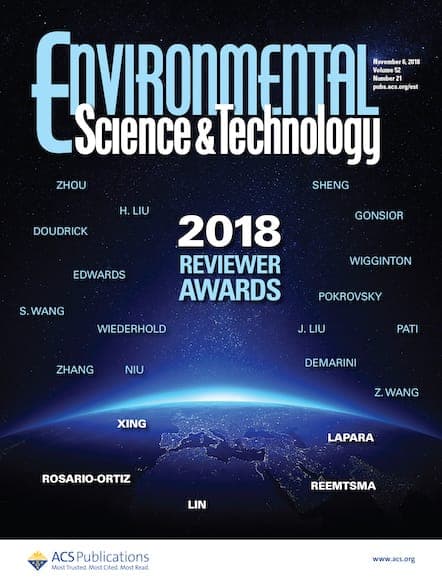Blow-dryers and other hair styling tools often recommend the use of heat-protective sprays—but routinely taming our tresses may be coming at a cost of indoor air quality and our general health.

Many of us use heat to style our hair—and even the most low-maintenance wash-and-go cut might need a rough blow-dry every now and then on a cold morning to prevent our locks from freezing solid on the morning commute. But while most of us who use straighteners or curling irons know that too much direct heat can be bad for our hair, it might come as more of a surprise to hear that hair styling can also be bad for our general health and air quality.
Salon-based chemical straightening procedures such as "Brazilian Blowouts" or keratin treatments have traditionally contained formaldehyde—a human carcinogen and linked to nasopharyngeal cancer, sinonasal cancer, and myeloid leukemia—although the FDA has now proposed that this be banned.1 But there are myriad chemicals in the products we use in our homes too.
Cyclic volatile methyl siloxanes (cVMS) are common in haircare products, and they can have a serious impact on the environment and human health. These chemicals are attractive to manufacturers due to their low surface tension, high stability, and smooth texture—making them ideal for personal care products, such as deodorants, lotions, and haircare. But they also bioaccumulate, and some have been shown to cause fatal liver and lung damage in animal models. Further evidence in the lab suggests inhaling decamethylcyclopentasiloxane can affect the respiratory tract, liver, and nervous systems.
To help understand cVMS exposure during hair styling, a team of researchers in the United States conducted experiments in a residential building. They tested siloxane-based haircare products using common styling techniques and measured the emissions of volatile organic compounds via proton-transfer-reaction time-of-flight mass spectrometry.2 The results showed that the haircare products were responsible for rapid changes in the chemical composition of the indoor atmosphere.
Furthermore, cVMS dominated the volatile emissions, with decamethylcyclopentasiloxane contributing the most. In addition to siloxanes, other volatiles included monoterpenes, monoterpenoids, and propylene glycol. But the exact emissions varied by person—from 110 to 1500 mg—and were affected by product type, styling tools, operation temperature, and hair length. So is the solution that we open the window when styling? Well, on a personal level, yes, but for our urban areas and environment, no.

Are Household Contaminants Affecting Our Pets?
As well as posing a health risk during styling, and with build-up in poorly ventilated homes, the authors noted that hair styling emissions escaping from buildings may be a concern for air quality in urban areas. This is borne out by evidence showing that decamethylcyclopentasiloxane concentrations increase in the early morning in North American cities3—and although levels tail off over the course of the day, the compounds can have an atmospheric lifetime of up to five days.4 Other teams working on the problem have also identified temporal patterns, with five-fold morning and evening peaks as people use their personal care products in their normal daily routine.5
Taken together, these findings show that indoor haircare routines can have a long-term impact on both indoor and outdoor air quality. It remains to be seen whether the FDA will follow up on the formaldehyde ban—and which other chemicals in personal care products might follow.
References
- Hogue, C. FDA to ban formaldehyde in hair products. Chemical & Engineering News 2023, 101 (35), p 13. October 23, 2023.
- Jiang, J. et al. Siloxane Emissions and Exposures during the Use of Hair Care Products in Buildings. Environ. Sci. Technol. 2023, 57, 48, 19999–20009.
- Coggon, M. M. et al. Diurnal Variability and Emission Pattern of Decamethylcyclopentasiloxane (D5) from the Application of Personal Care Products in Two North American Cities. Environ. Sci. Technol. 2018, 52 (10), 5610–5618.
- Avery, A. M. et al. Comparison of the Yield and Chemical Composition of Secondary Organic Aerosol Generated from the OH and Cl Oxidation of Decamethylcyclopentasiloxane. ACS Earth Space Chem. 2023, 7, 1, 218–229.
- Molinier, B. et al. Volatile Methyl Siloxanes and Other Organosilicon Compounds in Residential Air. Environ. Sci. Technol. 2022, 56, 22, 15427–15436.
